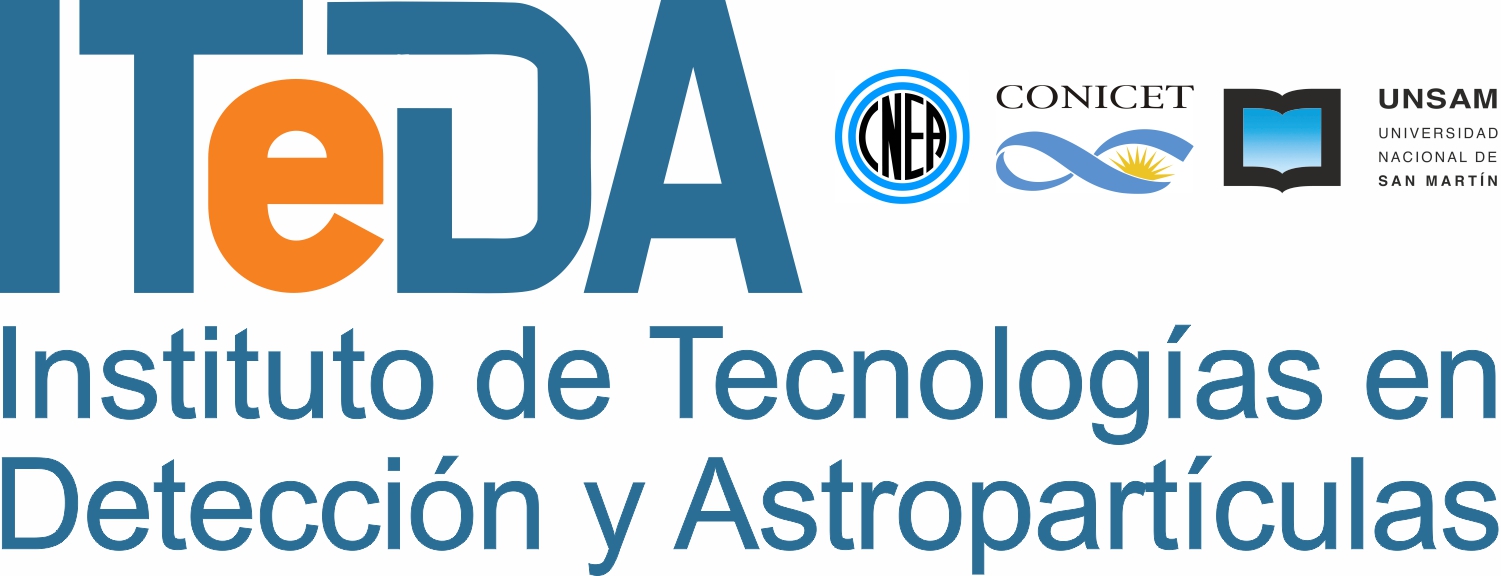Central Campus
Located on the premises of the Consituyentes Atomic Center, Av. Gral Paz 1499, San Martín, Province of Buenos Aires (1650). It has an approximate area of 380m2 (including laboratory facilities, office spaces and doctoral student rooms). The main facilities located at the headquarters are described below.
Electronic Workshop
The electronics workshop has space to store the permanent stock of electronic components, cables, tools and various electronic supplies necessary for the development of the electronics of each of the ITeDA projects. The workshop has the necessary machinery for the assembly and machining of PCBs (printed circuits, for its acronym in English), as well as the necessary tests to guarantee operation. It has an approximate area of 25m2.
Electronic Design Room
The electronics design room provides a workplace for the design of analog and digital circuits that are used for any of the projects in which ITeDa is involved. Here it is about providing a friendly work environment for team development, with the necessary tools (both software and hardware) for the design of circuits and PCBs. The laboratory has the latest technologies in equipment such as oscilloscopes, high-bandwidth programmable arbitrary wave generators, logic analyzer and various accessories (sources, voltage, current, capacitance meters, etc.). It has an approximate area of 37.5m2.
Computer center
The ITeDA computing center is mainly used for data analysis and simulation tasks. For the first, there is a mirror system of the data generated by the Pierre Auger Observatory composed of a RAID (disk array) with 18TB disk space, and a server for data processing. The simulation tasks are carried out on another server dedicated to hosting all the necessary software, which also has a RAID to store the data generated in said simulations. The simulation studies carried out at ITeDA are basically divided into two categories:
- Particle shower simulations to study observables that are sensitive to the chemical composition of the primary cosmic ray.
- Simulation of events with surface detectors, atmospheric fluorescence and muon counters, in different configurations to evaluate the response of the detectors and the optimization of the algorithms that are used in the reconstruction and analysis of data from the Pierre Auger Observatory.
This computing center also has servers for the administration of the ITeDA intranet, as well as servers commonly used by the institute’s members such as SVN (source codes), databases and Wiki.
Photomultiplier Laboratory
The specific objectives of the PMT Laboratory (photomultiplier tubes) are the construction and operation of a test system with a large number of multipixel PMTs for the complete characterization of each of the approx. 400 PMTs (and each of their pixels) that make up the AMIGA muon detectors, the construction and operation of a test system for low amounts of PMTs of any type for specific studies, and the study and use of scintillator optical fibers which will be used in the muon counters that will also be used in the test system. It has an approximate area of 12.5m2.
The results of PMT tests are stored in secure databases and analyzed to obtain their parameters, which are used as input data for detector simulation systems, experimental data analysis, etc.
Mechanical workshop
In the mechanical workshop, various tasks are carried out, among others, the machining of the PVC parts that make up the AMIGA modules, the alignment of the “cookie” that serves as a coupler between the fibers and the PMT of the modules, and polishing the cookie using a fly-cutter manufactured and designed by ITeDA. The design space for all the mechanical parts required in the institute is also located here. It has an approximate area of 37.5m2.
Construction and Measurement of Modules
The muon counter module construction and measurement workshop is used for the assembly of the AMIGA project detectors. The room also has an automated testing system for testing the operation of the scintillator bars and optical fibers using a “scanner” built from a 137 Cs radioactive source. This source is manipulated by an automatic X-Y positioning system commanded by a computer through the workshop’s Ethernet intranet. This system is responsible for measuring the current generated by the radioactive source in each pixel of the photomultiplier tube (PMT) of the detector by the fluorescent light of each of the 64 scintillating rods of the muon counter module. It has an approximate area of 75m2
PCB Laboratory
The PCB Laboratory has as specific objectives the manufacture of printed circuits in low quantities as a way to accelerate the testing and debugging process of the design of electronic prototypes. Within this the following processes are carried out: design, Drilling (it is carried out by a CNC machine), cutting the plate, Cleaning, Metallizing, photosensitizing, Exposure, developing, Anti-soldering mask and Screen printing.
